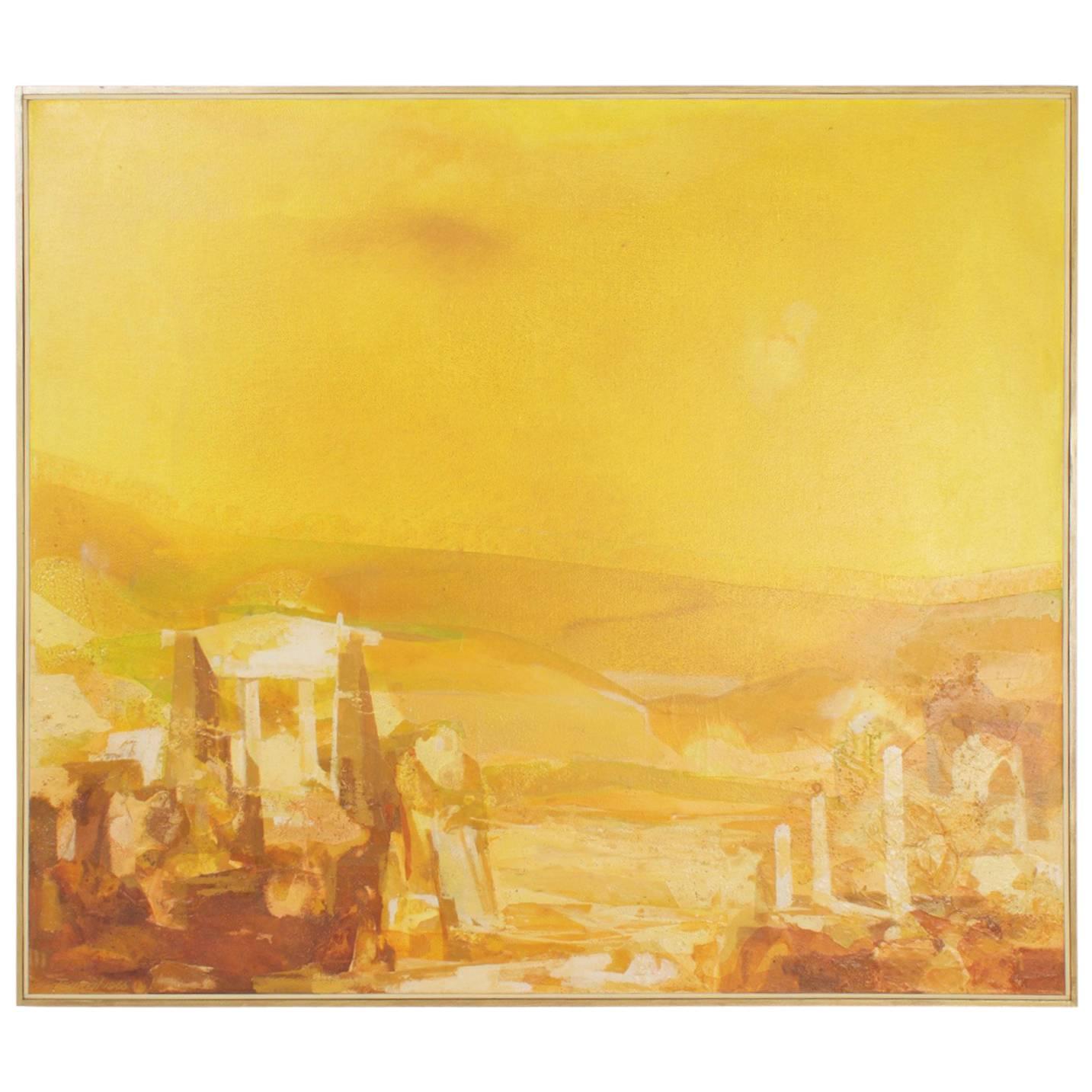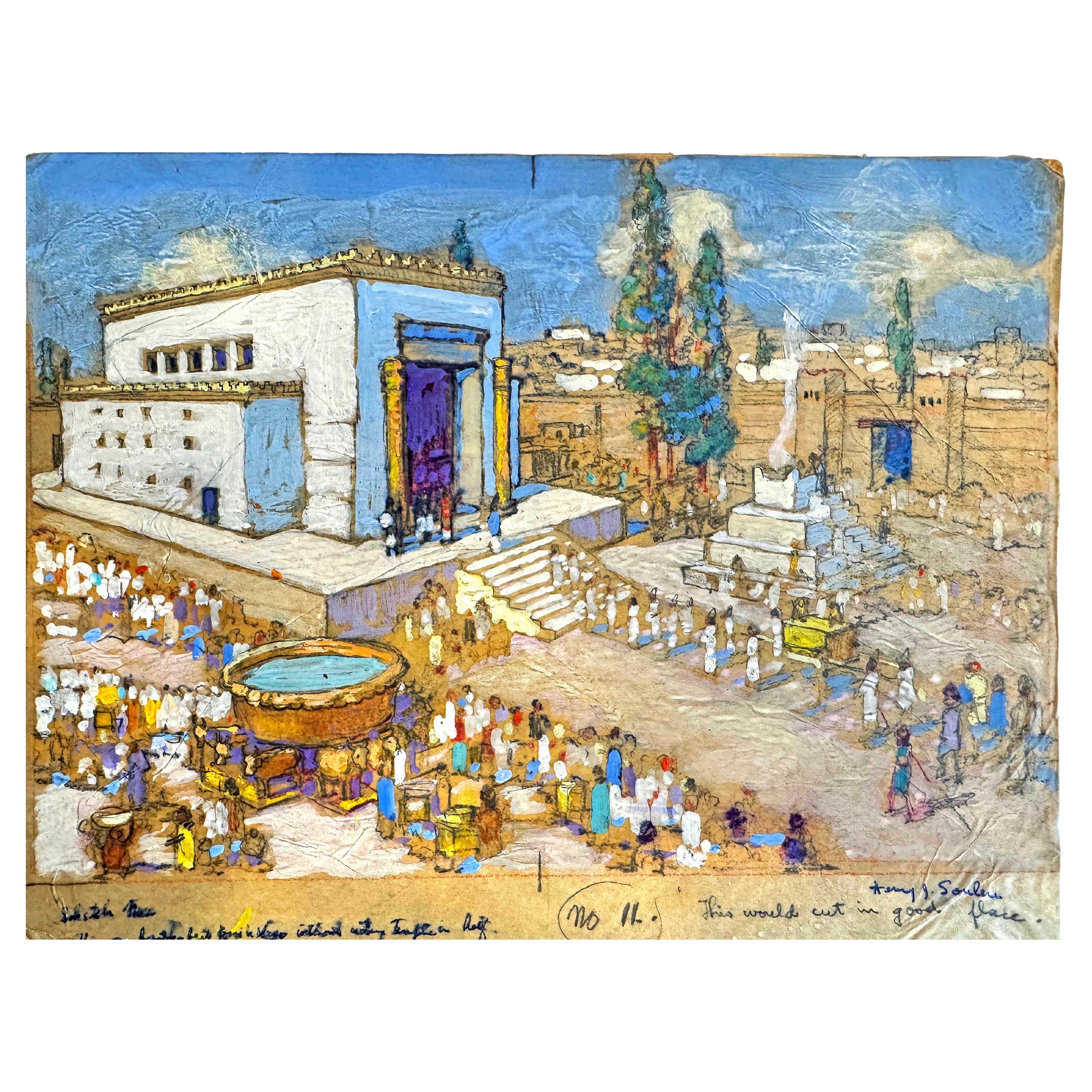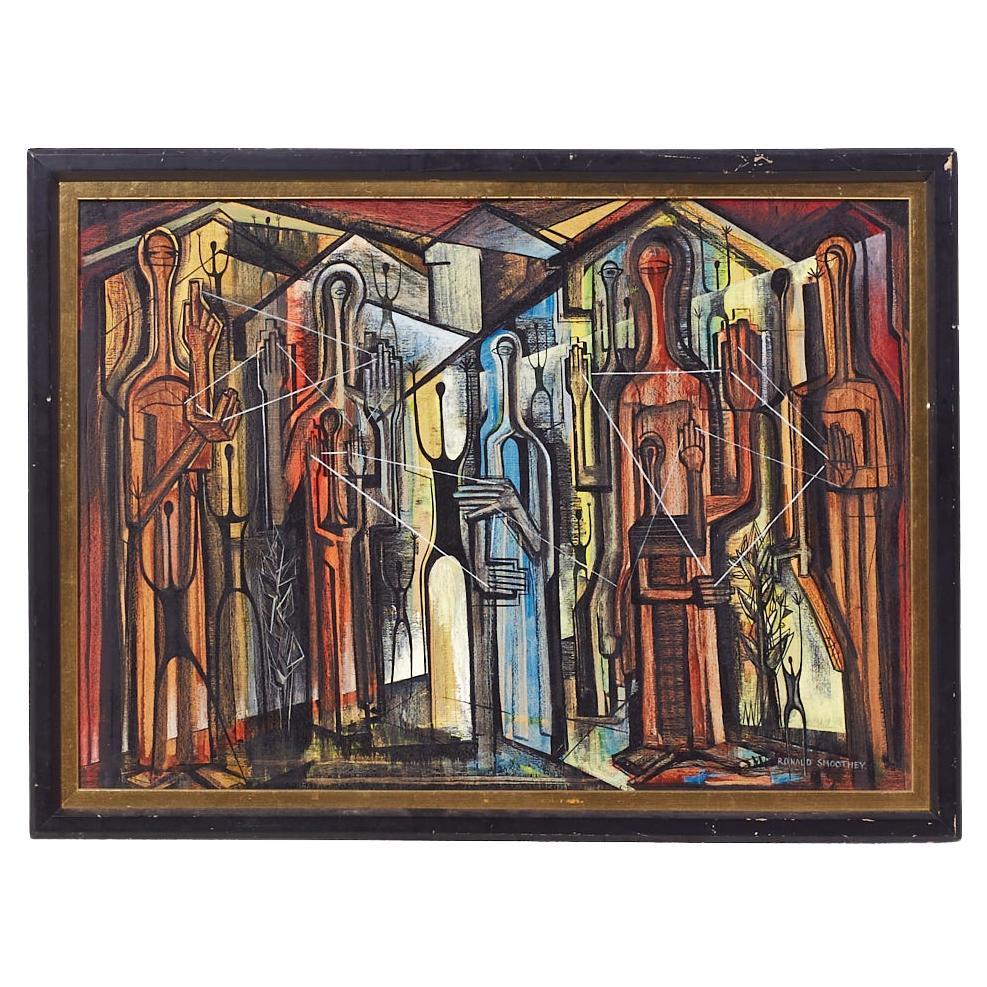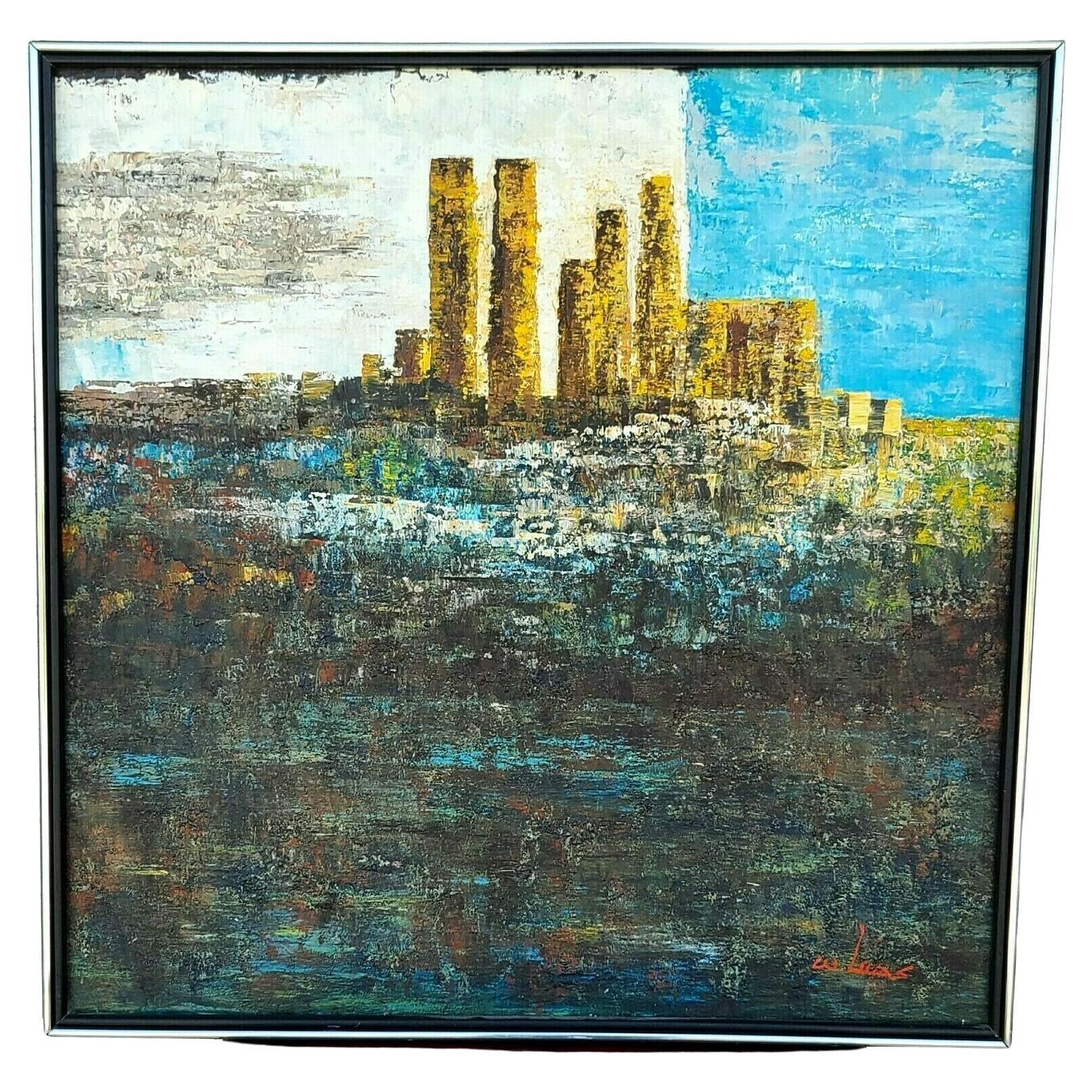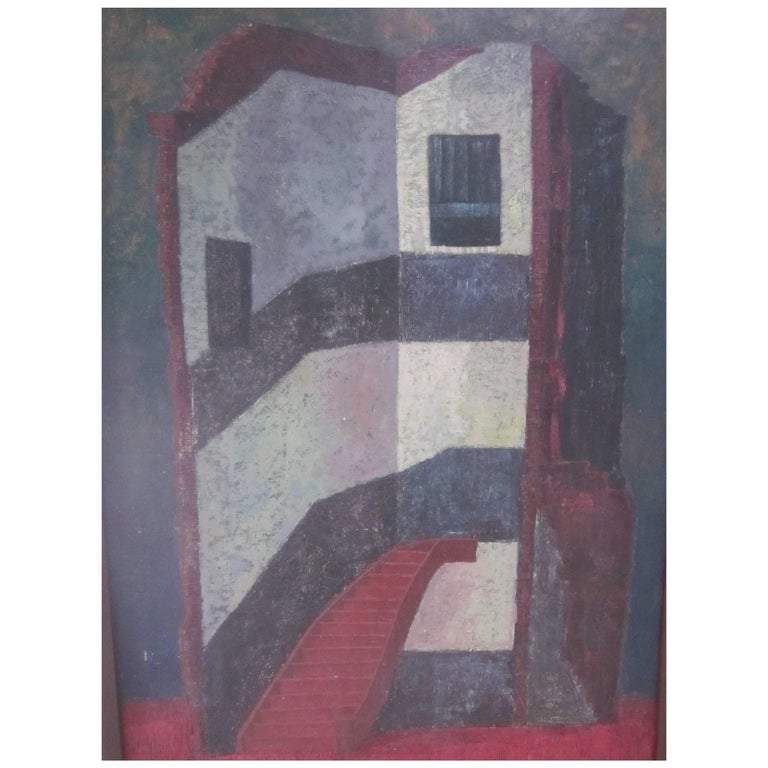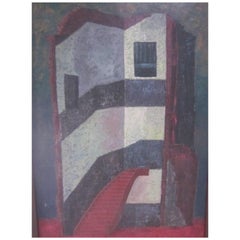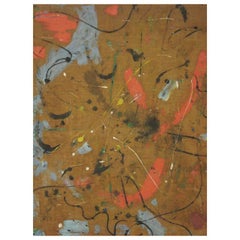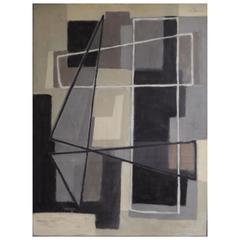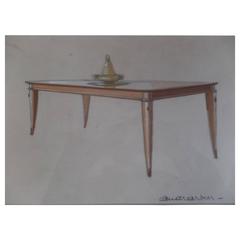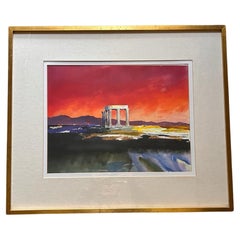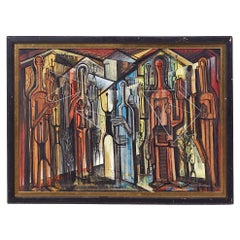Items Similar to "The Temple of Dendur" Painting by Eugene Berman
Want more images or videos?
Request additional images or videos from the seller
1 of 3
"The Temple of Dendur" Painting by Eugene Berman
$2,995
£2,314.16
€2,675.38
CA$4,232.15
A$4,746.64
CHF 2,485.74
MX$57,676.30
NOK 31,564.75
SEK 29,925.61
DKK 19,970.34
About the Item
Pen, ink and gouache on paper, painting "The Temple of Dendur' by Eugene Berman. Signed and dated, 1964.
Framed size is 28.25 x 22.25.
- Creator:Eugene Berman (Artist)
- Dimensions:Height: 9.5 in (24.13 cm)Width: 13.25 in (33.66 cm)Depth: 0.1 in (2.54 mm)
- Style:Mid-Century Modern (Of the Period)
- Materials and Techniques:
- Place of Origin:
- Period:
- Date of Manufacture:1964
- Condition:
- Seller Location:New York, NY
- Reference Number:Seller: EB41stDibs: U11062379352469
About the Seller
5.0
Vetted Professional Seller
Every seller passes strict standards for authenticity and reliability
Established in 1997
1stDibs seller since 2004
225 sales on 1stDibs
Typical response time: 1 hour
Associations
20th Century Specialists
- ShippingRetrieving quote...Shipping from: New York, NY
- Return Policy
Authenticity Guarantee
In the unlikely event there’s an issue with an item’s authenticity, contact us within 1 year for a full refund. DetailsMoney-Back Guarantee
If your item is not as described, is damaged in transit, or does not arrive, contact us within 7 days for a full refund. Details24-Hour Cancellation
You have a 24-hour grace period in which to reconsider your purchase, with no questions asked.Vetted Professional Sellers
Our world-class sellers must adhere to strict standards for service and quality, maintaining the integrity of our listings.Price-Match Guarantee
If you find that a seller listed the same item for a lower price elsewhere, we’ll match it.Trusted Global Delivery
Our best-in-class carrier network provides specialized shipping options worldwide, including custom delivery.More From This Seller
View AllMetaphysical Painting by Roger Hullaert, Belgium, 1932-1988
By Roger Hullaert
Located in New York, NY
Painting in oil Signed R. Hullaert.
Painted from an architectural perspective with a stairway leading into, the painting references a surrealist / metaphysical theme of accessing ...
Category
Mid-20th Century Belgian Modern Paintings
Large Flemish Midcentury Abstract Expressionist Painting by A.C. Hermkens, 1961
By A.C. Hermkens, Jackson Pollock
Located in New York, NY
Large abstract expressionist painting on raw canvas by Belgian Painter, A.C. Hermkens. Signed.
"Dynamicism and Space Co-exist in a Work of Subtle Tensions and Mythic Wishes.".
Category
Mid-20th Century Belgian Mid-Century Modern Paintings
Mid-Century "Ecole de Paris" Abstraction "Symphony in Grey" by Ferenc Varga 1957
Located in New York, NY
"Symphony in Grey" is an iconic oil on canvas, modern art painting by the Hungarian born artist, Ferenc Varga (Hungary, 1906-1989).
Varga left Hungary fo...
Category
Vintage 1950s French Modern Paintings
Materials
Canvas
French Drawing in Pen and Gouache by André Arbus, Paris, 1938
By André Arbus
Located in New York, NY
Gouache and pen work by André Arbus (1903-1969). Signed Andre Arbus.
Origin: Drawing of dining table by Andre Arbus for the apartment of Mme Pedersen, Paris, 1938.
Literature:...
Category
Vintage 1930s French Mid-Century Modern Drawings
Painting, Oil, 'Street Scene' Signed Bela Kadar
By Bela Kadar
Located in New York, NY
Painting, Street Scene, Signed Bela Kadar, (Hungary 1877-1955), un-framed, oil on board.
Bela Kadar was born in Hungary in 1877. Amongst his early interests was mural painting. Like many of the artists of his day he was drawn to Paris and Berlin, and by 1910 he had visited both cities twice. In 1923, Kadar showed his paintings in Berlin at the invitation of Herwath Walden. Walden was an important figure in the German avant-garde, being the publisher of the journal Der Sturm which featured the works of Franz Marc, Paul Klee, Wassily Kandinsky, Marc Chagall and Oskar Kokoschka. During the group exhibition at Walden's gallery with other artist's of Der Sturm, Kadar met Katherine Dreier whose Societe Anonyme was instrumental in bringing the work of the European avant-garde to New York. With her help two major exhibitions of his work were planned for the Brooklyn Museum of Art, the second of which in September 1928 Kadar travelled from Europe to attend.
Bela Kadar incorporated themes of Hungarian...
Category
Vintage 1930s Hungarian Mid-Century Modern Paintings
Bridge by Ursula Foulkes
By Ursula Foulkes
Located in New York, NY
Linocut by Ursula Foulkes (Great Britan) with dramatic color, form and mood.
Dimensions: 8" x 10".
References: Modern and Contemporary Art, Fauvism, Expressionism, Blue Rider ...
Category
Vintage 1930s English Modern Paintings
$1,500
You May Also Like
Impressionist Oil Painting of an Aegean Temple
Located in Palm Beach, FL
Dreamy impressionist painting with a striking, hot palette. Titled Aegean Temple on the original gallery tag and presented in the period, silver leaf frame.
Category
20th Century American Mid-Century Modern Paintings
Materials
Paint
Donald Hamilton Fraser -Mixed Media Original - Temple of Apollo, Corinth
Located in Pewsey, GB
Donald Hamilton Fraser a wonderful mixed media original of The Temple Of Apollo, Corinth. This painting in very much in his wonderful style where he layered thick bright paint with a...
Category
Vintage 1980s British Modern Paintings
Materials
Acrylic
"Solomon's Temple", Illustration Art, Henry Soulen, "Pilgrimage to Palestine"
By Henry Soulen 1
Located in Philadelphia, PA
This colorful and vivid painting depicting Solomon's Temple in Jerusalem, with a forecourt crowded with priests and onlookers, is by Henry Soulen, one of the great masters of illustr...
Category
Vintage 1920s American Art Deco Paintings
Materials
Paint
Ronald Smoothey Mid Century Monoliths Oil on Board Painting
Located in Countryside, IL
Ronald Smoothey Mid Century Monoliths Oil on Board Painting
This painting measures: 30.25 wide x 1 deep x 23 inches high
We take our photos in a controlled lighting studio to show ...
Category
Vintage 1970s English Mid-Century Modern Paintings
Materials
Canvas, Wood, Paint
MCM Original Signed W Lucas Cityscape Oil Painting
Located in Lake Worth, FL
For FULL item description click on More Details below.
Offering One Of Our Recent Palm Beach Estate Fine Art Acquisitions Of A
Mid Century Modern Original Signed W LUCAS...
Category
Vintage 1970s Mid-Century Modern Paintings
Materials
Canvas, Acrylic, Wood
A Gouache on Paper by Robert Freiman, 1960
By Robert Freiman
Located in St.Petersburg, FL
A striking gouache on paper by Robert Freiman, signed and dated 1957.
Robert J Freiman (b. 1917 - d. 1991), deaf from birth, was born in New York City and attended the Lexington Sch...
Category
Vintage 1960s American Modern Drawings
More Ways To Browse
Decorating With Antique Secretary Desk
Dorothy Draper Espana
Dragonfly China
Dresser Jar
Duck Hunting
Egyptian Copper Plate
Electric Fans
Empire Style Library Table
Etruscan Horse Sculpture
Federal Mahogany Chest
Fighting Roosters
Flag Empire
French Bombay Cabinet
French Boucherie
French Outdoor Marble Table
General Store Cabinet
General Store Display
Genie Glass
